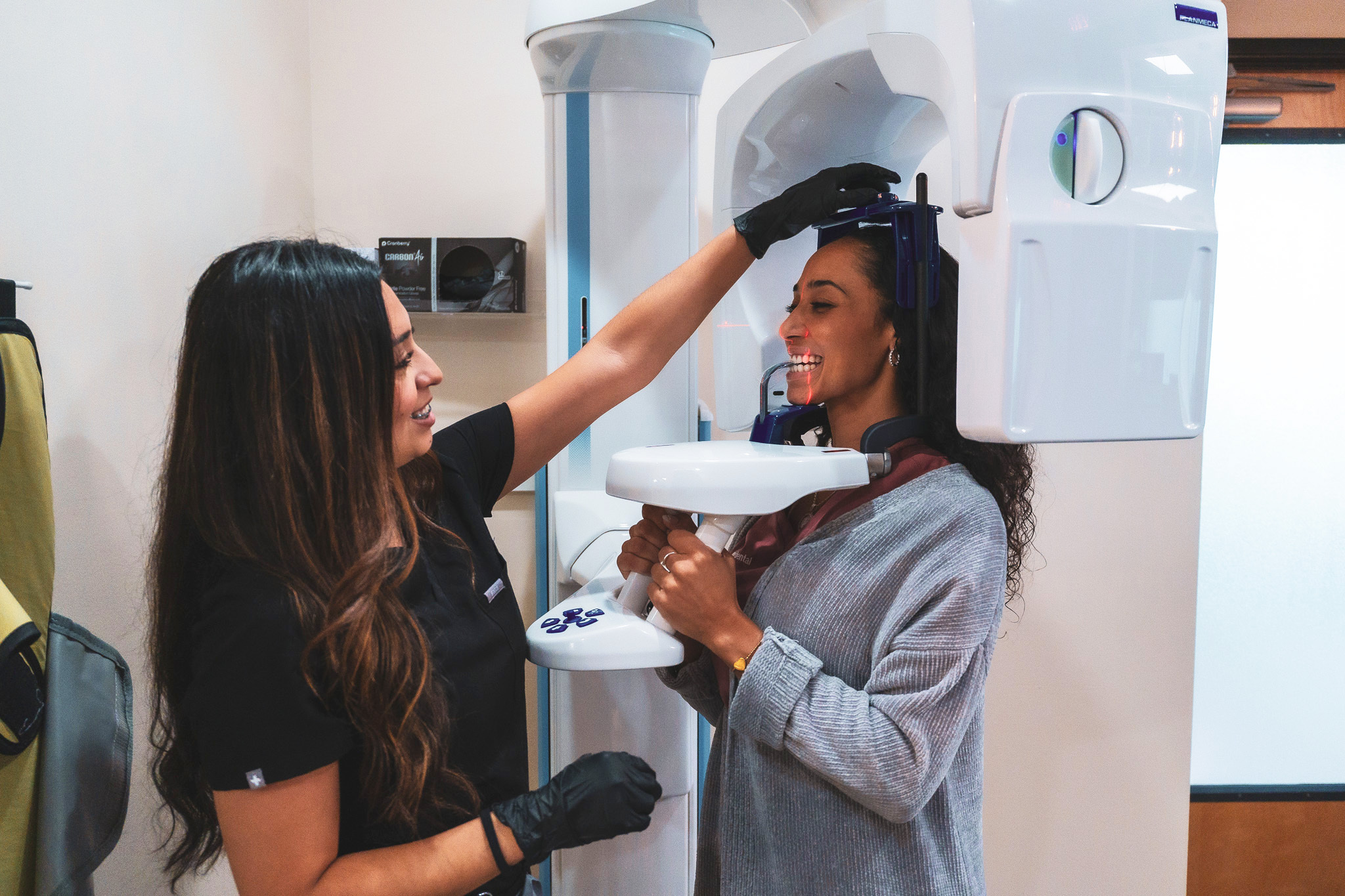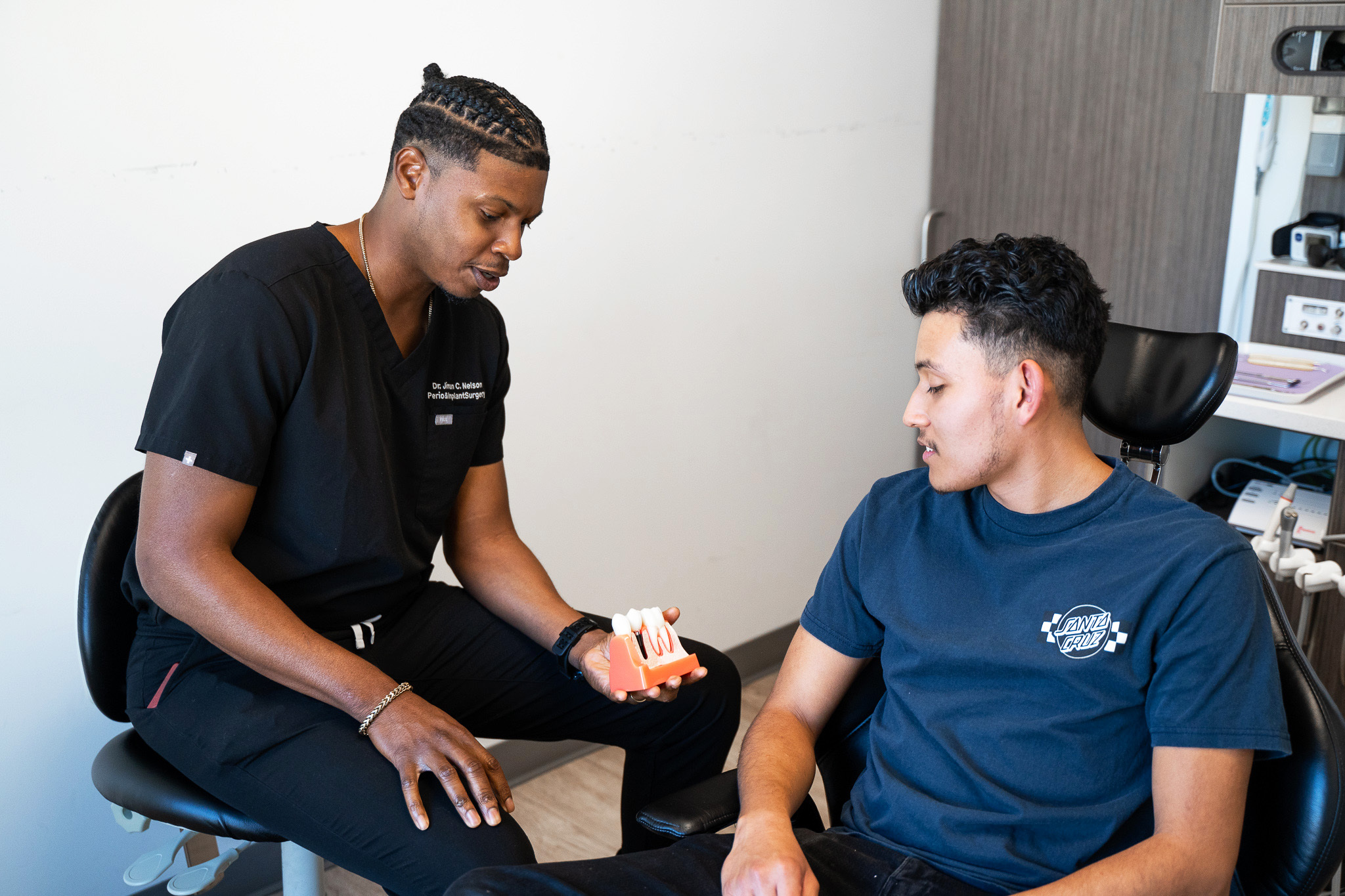Dental radiography is an essential tool for diagnosing and treating dental problems. Digital dental radiography is a newer technology that offers many advantages over traditional film-based radiography. URBN Dental Montrose is proud to offer digital dental radiography to our patients. This technology provides a number of benefits over traditional X-ray machines, including: clearer images that can be magnified, less radiation exposure, and quicker turnaround time.
Digital dental radiography is a type of dental X-ray imaging where digital X-ray sensors are used in place of traditional film. Digital dental radiography uses a digital sensor to capture images of the teeth and supporting structures. The digital sensor is placed in the mouth and produces a high-quality image that can be viewed instantly on a computer screen.
Digital dental radiography offers many advantages over traditional film-based radiography. The images produced by digital dental radiography are of a higher quality, which means that small problems can be detected more easily. In addition, digital images can be enhanced and enlarged, which makes it easier for the dentist to make an accurate diagnosis.
Want a healthy smile?
Dental x-rays are important for helping your dentist find problems with your teeth and gums. There are different kinds of dental x-rays, and each provides a different view of your mouth.
Not confident with your smile?

The drawbacks of dental radiography include the small amount of radiation exposure and the need for special training to interpret the images. Additionally, x-rays do not show the soft tissues of the mouth, so other diagnostic tools may be needed to fully evaluate a patient.
Dental x-rays are generally considered to be safe. The amount of radiation exposure from a dental x-ray is very low, and the risks are usually outweighed by the benefits of early detection of dental problems. However, pregnant women and young children should avoid unnecessary x-rays.
The type of x-ray that your dentist takes will depend on the specific problem that they are trying to diagnose. The most common types of dental x-rays are bitewing x-rays, which show the upper and lower teeth, and periapical x-rays, which show the entire tooth.

Schedule your consultation now!
During the digital dental radiography procedure, the digital sensor will be placed inside your mouth. You will be asked to bite down on the sensor, and the x-ray machine will take a series of images. The procedure is quick and easy, and you will not experience any discomfort.
After the digital dental radiography procedure, you will be able to immediately see the images on the computer screen. Your dentist will then explain the findings and answer any questions that you may have.
Looking for the best place to get your dental radiography in Montrose? Look no further than URBN Dental! Here at URBN Dental, we offer top-quality dental radiography services to all of our patients. We believe that everyone deserves to have a healthy and beautiful smile, and we are dedicated to providing our patients with the best possible care.
Another reason to visit URBN Dental for your dental radiography needs is our experienced and friendly staff. We understand that visiting the dentist can be a daunting experience, and we go out of our way to make our patients feel comfortable and relaxed. We will take the time to answer any questions you may have and to explain the procedures we will be performing.
If you live in or around the Museum District, West University Place, Upper Kirby, or River Oaks in Houston, please schedule your dental radiography today!
No Insurance? No problem.
© Copyright 2025 | Designed & SEO Optimized by The Doctors Marketing
Disclaimer: URBN Dental uses restorative materials such as Admira Fusion® by VOCO, which are free of BPA and Bis-GMA, and are not known to degrade into microplastics under normal oral conditions. While marketed as biocompatible and free of traditional plastic monomers, no dental material is guaranteed to be completely risk-free for all patients. This information is provided for educational purposes and does not constitute medical or regulatory advice.

Discover your perfect smile with a FREE Invisalign assessment.

Receive a complimentary 3D scan ($300 value) when you proceed with implant care.

Speak with our experts about your smile goals from the comfort of your home.
Discuss your smile goals with our experts—choose an in-office visit or a convenient 15-minute phone consult.

Quick, affordable care when you need it most.

Have questions about implants? Get personalized guidance in a brief phone call.